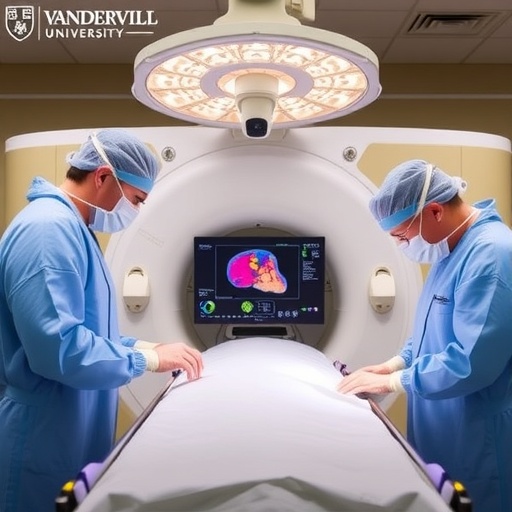In the advancing field of cancer research, the complexity of the immune system’s interactions with cancer has become a focal point of ongoing investigations. A particularly intriguing player in this landscape is myeloid-derived suppressor cells (MDSCs). Recent work by Meng et al. sheds new light on the role of these cells specifically within the context of chronic myeloid leukemia (CML). Understanding the mechanisms by which MDSCs operate could potentially open new avenues for therapeutic strategies aimed at improving patient outcomes in CML.
Chronic myeloid leukemia is a type of cancer that originates in the blood-forming cells of the bone marrow and leads to the overproduction of myeloid cells. A hallmark feature of CML is the presence of a specific genetic mutation known as the Philadelphia chromosome, which produces the BCR-ABL fusion protein. This alteration is instrumental in the disease’s pathogenesis, but it is the tumor microenvironment, composed of various immune cells, that plays a critical role in disease progression and therapeutic resistance.
MDSCs are a heterogeneous population of immune cells that typically expand in response to tumor presence. Their primary function is to downregulate immune responses, thus enabling tumors to escape immune surveillance. In the case of CML, the expansion of MDSCs has been linked to poor prognosis and disease progression. They exert their immunosuppressive effects through various mechanisms, including the production of reactive oxygen species and inhibitory cytokines, which can directly impair T-cell activation and function.
The latest findings from Meng and colleagues indicate that MDSCs in CML may also influence the therapeutic response to tyrosine kinase inhibitors (TKIs), the primary treatment for CML. These inhibitors target the BCR-ABL protein, but their effectiveness can be undermined by the presence of MDSCs. The work underlines the necessity of considering immune components when developing treatment protocols for cancer patients, especially those with CML.
Furthermore, the research highlights a bidirectional relationship between MDSCs and the tumor microenvironment. On one hand, tumors recruit MDSCs through the release of various factors; on the other hand, MDSCs can affect the composition and functionality of the tumor microenvironment. This interconnectedness suggests that targeting MDSCs could potentially enhance the effectiveness of existing cancer therapies, providing a multifaceted approach to treatment.
Notably, the study identifies specific markers that can be used to characterize MDSCs in CML patients. These markers may serve as potential therapeutic targets or prognostic indicators. By understanding the unique profile of MDSCs in CML, researchers can devise strategies to either inhibit their suppressive functions or modulate their recruitment to enhance T-cell responses against the leukemia.
The concept of reprogramming the immune landscape is gaining traction in oncology. The implication of Meng et al.’s findings is that it may be possible to convert MDSCs from a hindrance to an asset in the fight against cancer. By employing agents that can turn immune suppression into immune activation, researchers aim to devise novel immunotherapies. Such strategies could create a synergistic effect when combined with traditional and targeted therapies.
Clinical trials will be essential to validate the findings presented in this latest research. Investigating how alterations in MDSC populations correlate with treatment responses will provide critical insights into patient management in CML. Moreover, establishing the therapeutic potential of MDSC modulation could revolutionize treatment protocols and lead to better outcomes in patients who are resistant to current standard-of-care therapies.
Beyond the immediate implications for CML, the insights derived from this study may have broader applications in other malignancies as well. Similar immunosuppressive mechanisms are often at play in various cancers, suggesting potential paradigms that could extend to a wider array of hematologic and solid tumors. The ability to modulate the immune response through targeting MDSCs presents an exciting frontier in cancer research.
As our understanding of the immune system’s role in cancer deepens, therapeutic paradigms continue to evolve. The challenge lies in fine-tuning these approaches to achieve maximal efficacy while minimizing adverse effects. Integrating findings from studies such as those of Meng et al. into clinical practice will require collaboration among researchers, clinicians, and patients alike.
Ultimately, the work of Meng and colleagues serves as a critical reminder of the need for a comprehensive understanding of the tumor environment and immune interactions in shaping the outcomes of cancer therapies. The pursuit of innovative treatments that harness the natural complexities of the immune system holds the promise of not only improving the lives of CML patients but potentially transforming cancer care on a global scale.
With these fundamental insights into the role of MDSCs, we stand at the threshold of a new dawn in cancer therapy. As the journey continues, ongoing research will be essential in further unraveling the intricate dance between cancer cells and the immune system, illuminating strategies to turn the tide in favor of the patient.
In summary, the study conducted by Meng et al. serves as a pivotal reference that advances our understanding of MDSCs in CML. As future research builds upon these findings, we may well witness a paradigm shift in how chronic myeloid leukemia is treated, emphasizing the importance of immune modulation in conjunction with existing therapies.
Subject of Research: Myeloid-derived suppressor cells in chronic myeloid leukemia
Article Title: Advancing our understanding of the influence of myeloid-derived suppressor cells in chronic myeloid leukemia
Article References:
Meng, X., Zhang, Y., Xu, H. et al. Advancing our understanding of the influence of myeloid-derived suppressor cells in chronic myeloid leukemia.
J Cancer Res Clin Oncol 151, 263 (2025). https://doi.org/10.1007/s00432-025-06315-6
Image Credits: AI Generated
DOI: 10.1007/s00432-025-06315-6
Keywords: Myeloid-derived suppressor cells, chronic myeloid leukemia, immune modulation, cancer therapy, tyrosine kinase inhibitors.
Tags: advances in cancer immunologycancer immunotherapy challengeschronic myeloid leukemia researchimmune evasion in chronic myeloid leukemiaimmune system interactions with cancerMDSCs and tumor immune escapemechanisms of MDSC expansionmyeloid-derived suppressor cells in cancerPhiladelphia chromosome in leukemiarole of immune cells in leukemia progressiontherapeutic strategies for CMLtumor microenvironment and immune cells






